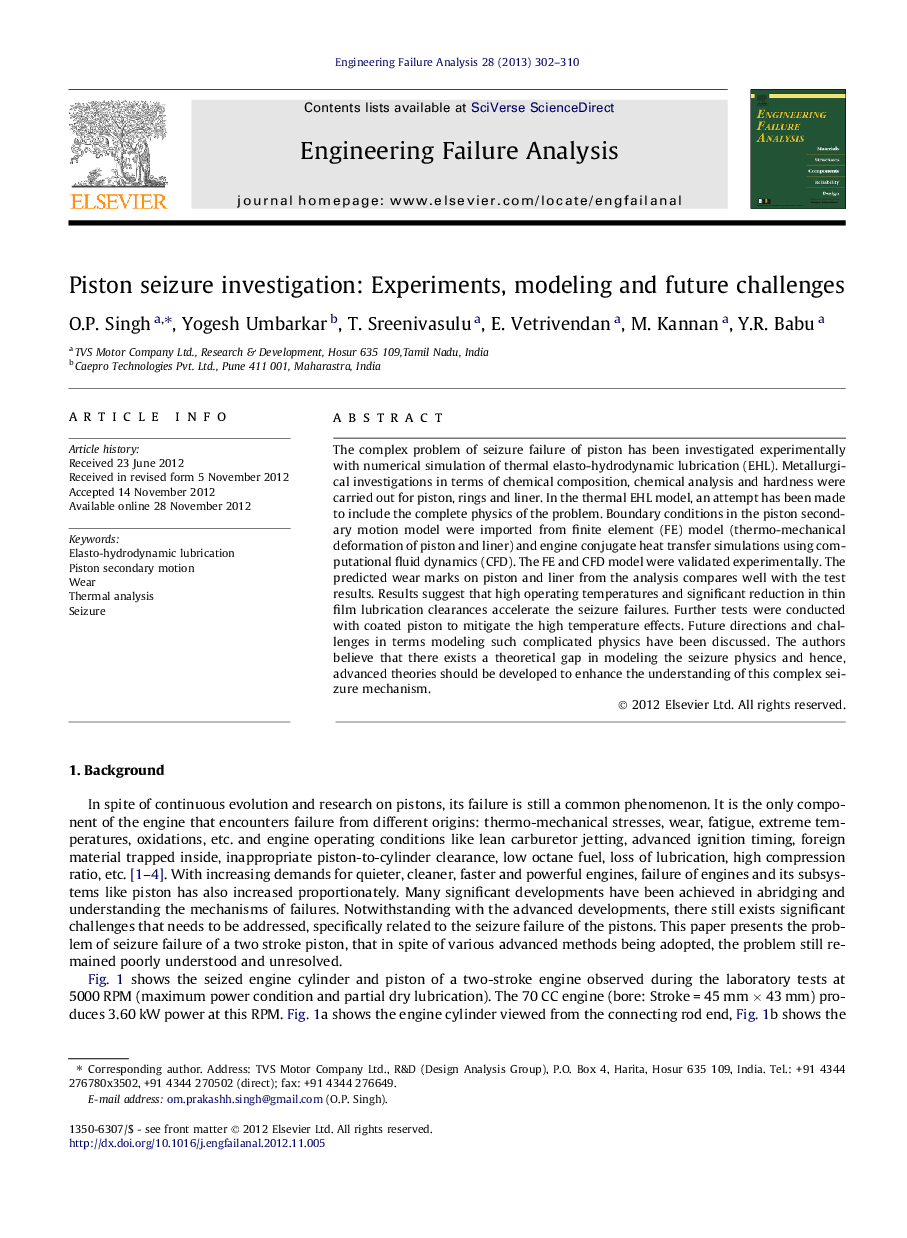| Article ID | Journal | Published Year | Pages | File Type |
|---|---|---|---|---|
| 768697 | Engineering Failure Analysis | 2013 | 9 Pages |
The complex problem of seizure failure of piston has been investigated experimentally with numerical simulation of thermal elasto-hydrodynamic lubrication (EHL). Metallurgical investigations in terms of chemical composition, chemical analysis and hardness were carried out for piston, rings and liner. In the thermal EHL model, an attempt has been made to include the complete physics of the problem. Boundary conditions in the piston secondary motion model were imported from finite element (FE) model (thermo-mechanical deformation of piston and liner) and engine conjugate heat transfer simulations using computational fluid dynamics (CFD). The FE and CFD model were validated experimentally. The predicted wear marks on piston and liner from the analysis compares well with the test results. Results suggest that high operating temperatures and significant reduction in thin film lubrication clearances accelerate the seizure failures. Further tests were conducted with coated piston to mitigate the high temperature effects. Future directions and challenges in terms modeling such complicated physics have been discussed. The authors believe that there exists a theoretical gap in modeling the seizure physics and hence, advanced theories should be developed to enhance the understanding of this complex seizure mechanism.
► Piston seizure investigated using experiments and state-of-the-art simulations. ► High Silicon content increase piston life but high temperature seizure persists. ► Large decrease in piston-to-wall clearance observed 28° after TDC. ► The predicted wear mark from numerical model compares well with the test results. ► Advance theory needs to be developed to understand seizure mechanism.
